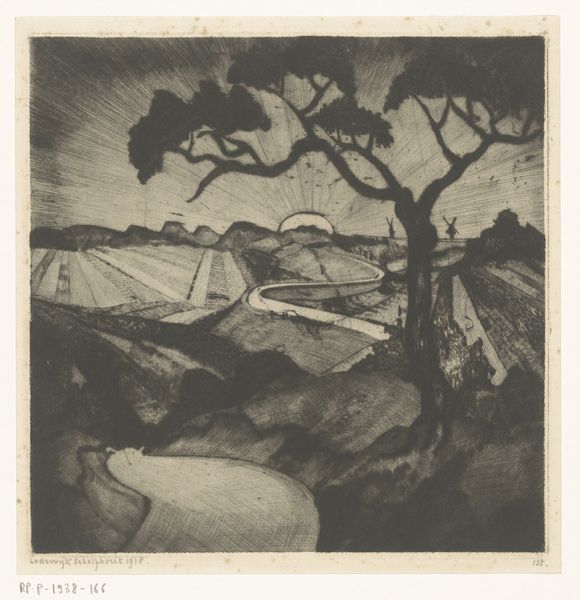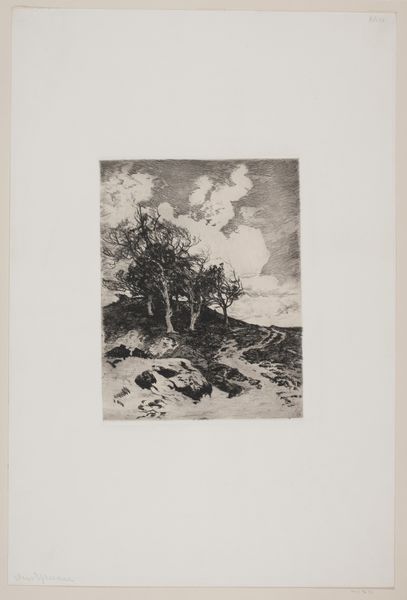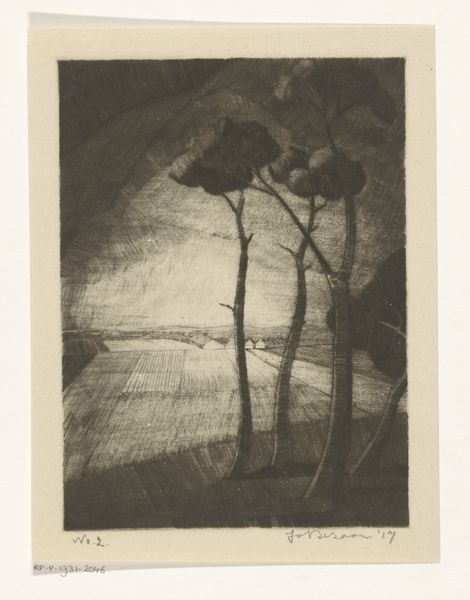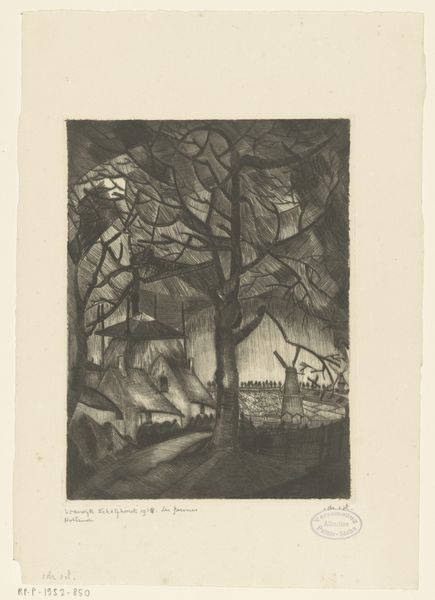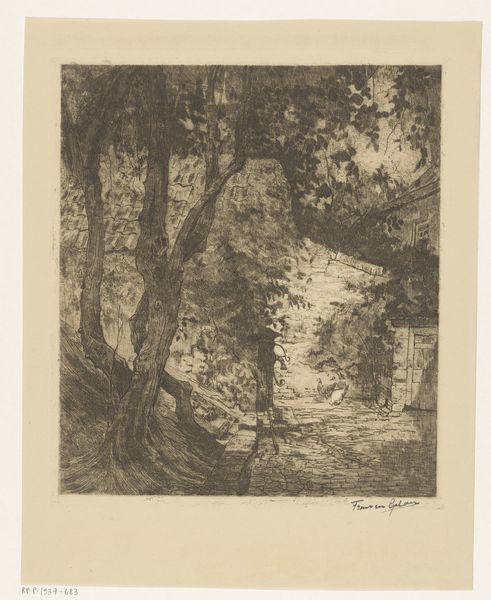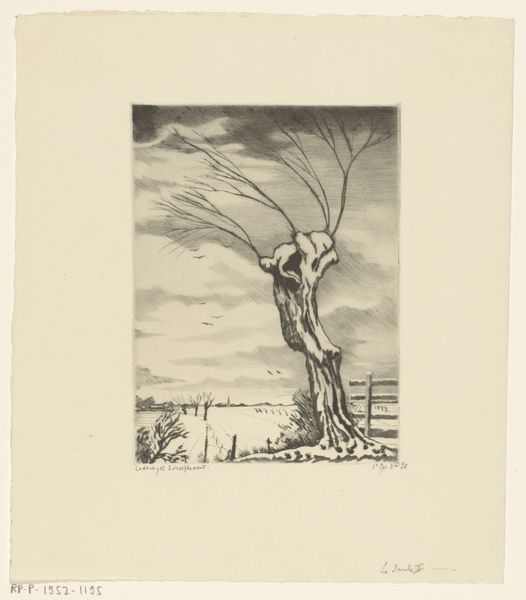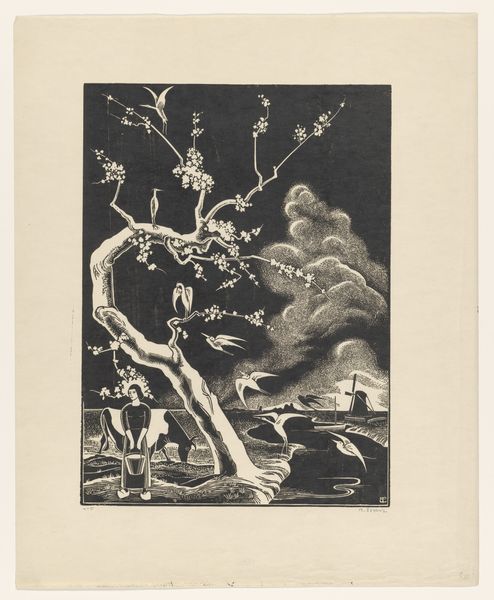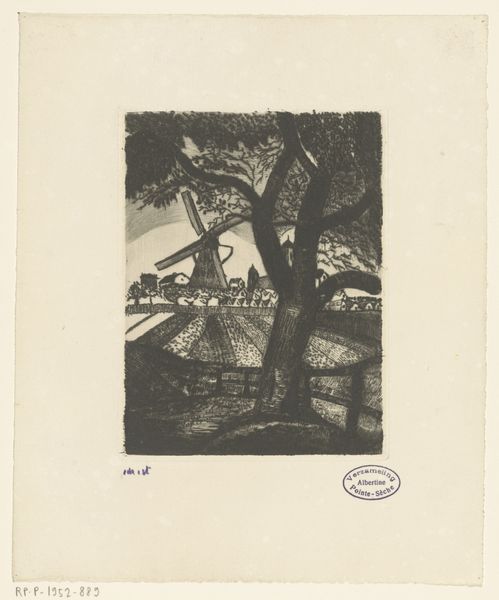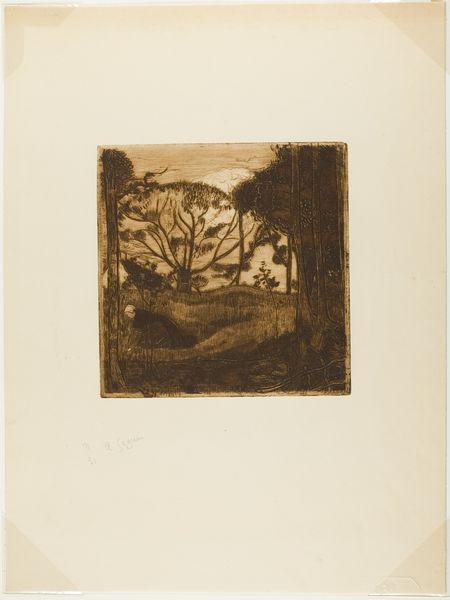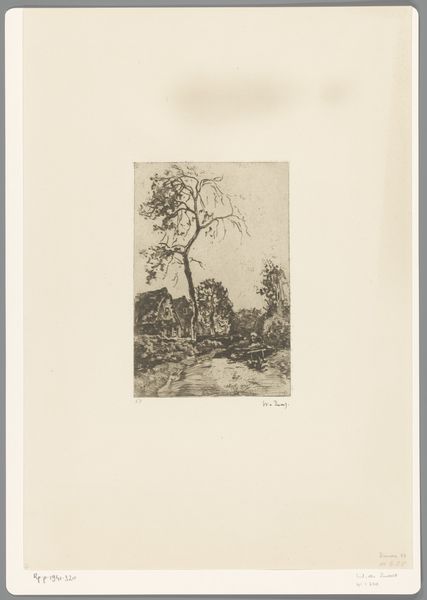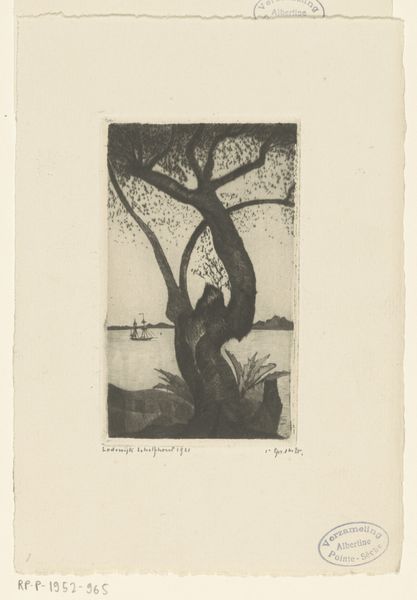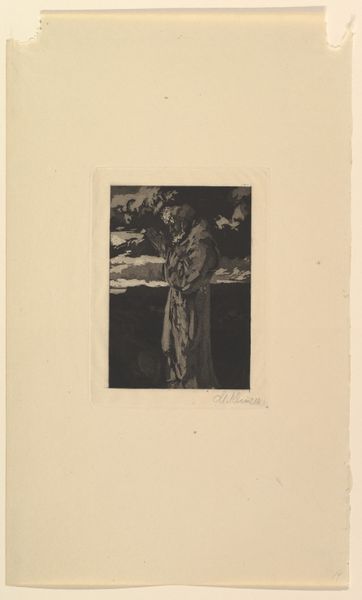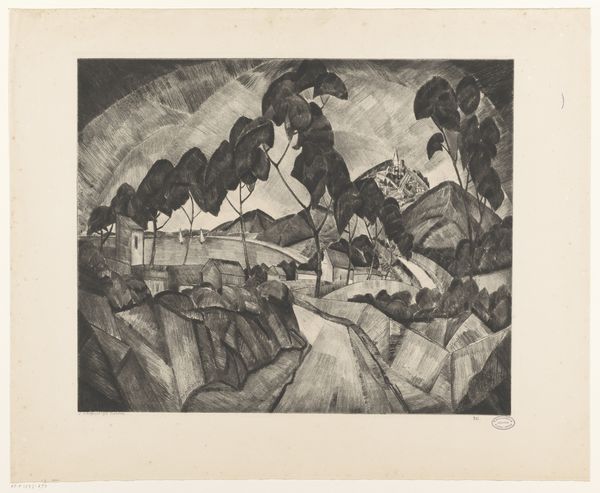
print, linocut
# print
#
linocut
#
landscape
#
linocut print
#
expressionism
#
watercolour illustration
Dimensions: height 200 mm, width 198 mm
Copyright: Rijks Museum: Open Domain
Curator: This is "Rising or Setting Sun" by Lodewijk Schelfhout, made in 1918. It’s a linocut print currently held at the Rijksmuseum. Editor: It's a powerful image. The high contrast and dense lines give it an almost oppressive, melancholic feel. Curator: Indeed. The use of linocut here is fascinating; a relatively accessible medium, chosen by Schelfhout to depict a traditional landscape scene. It suggests a democratizing impulse, to make art and its themes readily available. Editor: I agree. Considering it's 1918, the end of the First World War is relevant. That stark contrast—the harsh black and white—resonates with the emotional landscape of that era, reflecting loss, uncertainty, and the questioning of established social orders. Even windmills look ominous. Curator: Precisely. Schelfhout's choice to create this piece as a print indicates a desire for wider dissemination, making a potent visual statement available to a broader audience rather than being confined to a single canvas for an elite collector. There is also a very modern division in its materiality—look at how those flat expanses contrast with dense hatching. Editor: Also, think about the deliberate construction of the image: the sun, or rather its silhouette, as a focal point, dominating a scene of rural life. But are we actually looking at a rising or a setting sun? A birth of hope, or an end of an era? This ambiguity seems intentional, asking us to grapple with these themes, as society did after WW1. Curator: A compelling thought. By employing a method often associated with craft and using stark linework, Schelfhout challenges hierarchies and asks viewers to examine their relationship with both art production and the rural Dutch landscape he presents. Editor: Right. This image, through its production and stark symbolism, speaks to a historical context, but its emotional core around loss and possible rebirth remains relevant even today. It reminds me of similar works of Käthe Kollwitz; it shares some interesting, somber tones, both materially and symbolically. Curator: Looking closer at "Rising or Setting Sun", we can better appreciate how it encourages us to see the artist's world, his methods, and maybe also our own lives through a powerful blend of image and substance. Editor: Exactly, a simple print can prompt contemplation, extending from the means of production all the way through socio-political reflections about a very difficult time.
Comments
No comments
Be the first to comment and join the conversation on the ultimate creative platform.
